New Delhi: India’s latest trade data, released earlier this week, reinforces that the country’s share in global merchandise exports continues to remain below what it was at the time of Independence, nearly 80 years ago. Overall, India’s share in global goods exports has remained below two percent since 1950.
The data also shows that the share of merchandise in India’s total exports has fallen to its lowest level in at least 50 years, with services steadily increasing its share. In fact, this declining share of merchandise exports has accelerated since 2014, despite the Modi government’s ‘Make in India’ initiative.
Compounding this trend is the fact that global trade-related uncertainty has meant that the latest data for February 2025, released Monday by the Ministry of Commerce and Industry, marks the fourth consecutive month merchandise exports have been lower than in the same month of the previous year.
“India’s merchandise exports fell for the fourth month on the trot, by 10.9 percent on-year to $36.9 billion in February from $41.4 billion a year ago, after a 2.4 percent decline in January,” Crisil said in a note analysing February’s trade data.
“This is the sharpest contraction in trade in 20 months that stems from a broad-based decline in the exports of crude oil, core, and gems and jewellery, amid rising uncertainties from tariff actions,” it added. Core refers to all exports excluding oil and gold.
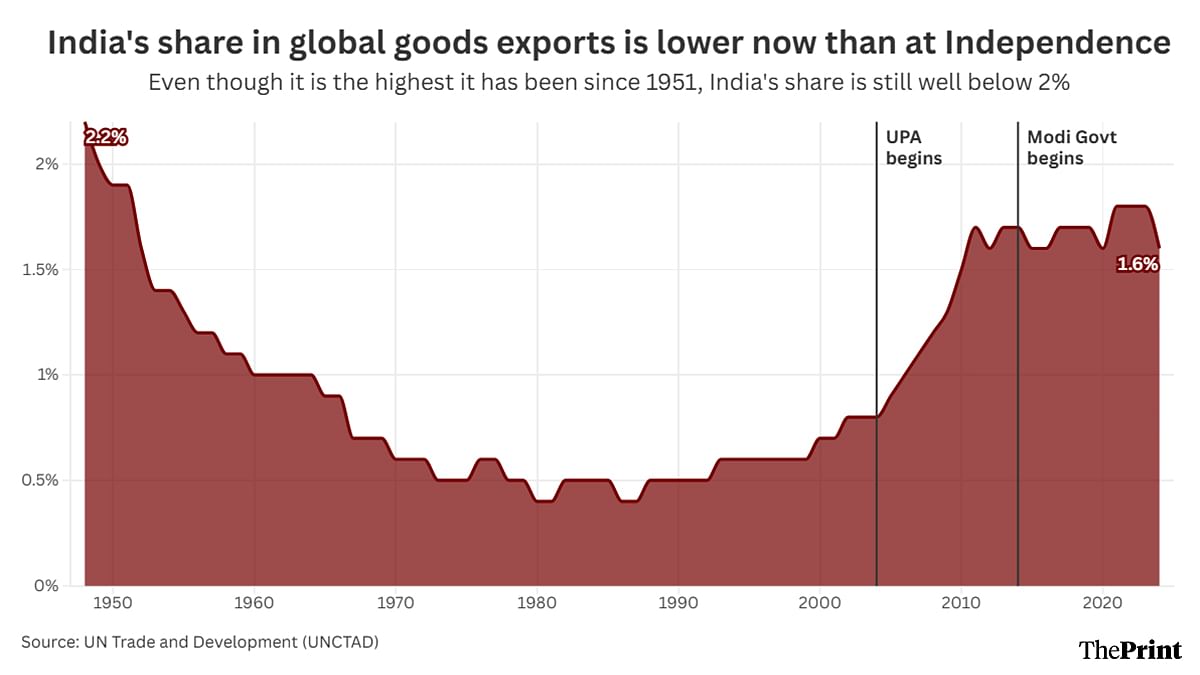
Also Read: India’s heightened economic policy uncertainty is hurting investor sentiment, IMF says
Minuscule contribution on global level
An analysis by ThePrint of data from the United Nations Conference on Trade and Development (UNCTAD) and the government shows that India’s share in global merchandise exports stood at 2.2 percent in 1948—the first year that data was available for.
However, this low contribution soon fell further to bottom out at 0.4 percent by 1987. This was largely due to a restrictive foreign exchange rate policy by the Reserve Bank of India (RBI), which kept the rupee exchange rate artificially high. For example, in 1980, the exchange rate stood at just Rs 7.9 per dollar.
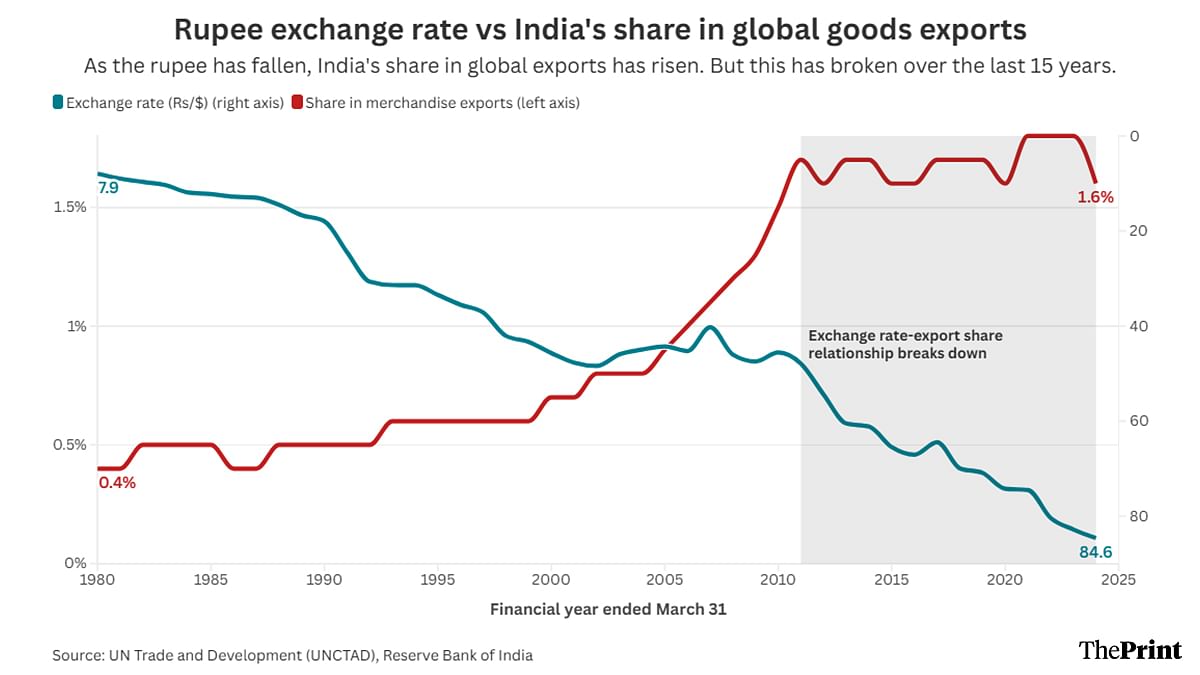
In conventional economics, the stronger a country’s currency, the more expensive its exports become. Conversely, as the currency weakens, the exports become cheaper.
Sure enough, as the RBI began to loosen its hold over the rupee and let it depreciate, India’s share in global commodity exports also began to rise again. By 2003, the rupee fell to Rs 48.4 per dollar and India’s share in global merchandise exports doubled to 0.8 percent.
This surge in India’s share in global exports accelerated further under the Congress-led United Progressive Alliance (UPA) government, from 0.8 percent in 2004 to 1.7 percent in 2014—the fastest such rise in India’s history.
However, the data reveals a concerning aspect of India’s export share over the last 15 years. That is, despite a continued depreciation in the rupee from Rs 45.56 a dollar in 2011 to an average of Rs 84.61 in 2025 so far, India’s share in global goods exports has stagnated.
It stood at 1.5 percent in 2011, rose to 1.8 percent by 2023, and is estimated at just 1.6 percent in 2024, based on UNCTAD’s projections of global exports for that year. This would mean India’s share in global merchandise exports actually marginally declined during the Modi government’s first two terms.
Services lead the way
Another facet of India’s trade data is the balance between goods and services exports. The data shows that the composition of India’s exports has changed significantly over the last 50 years since 1975-76, which is the earliest year for which services export data is readily available.
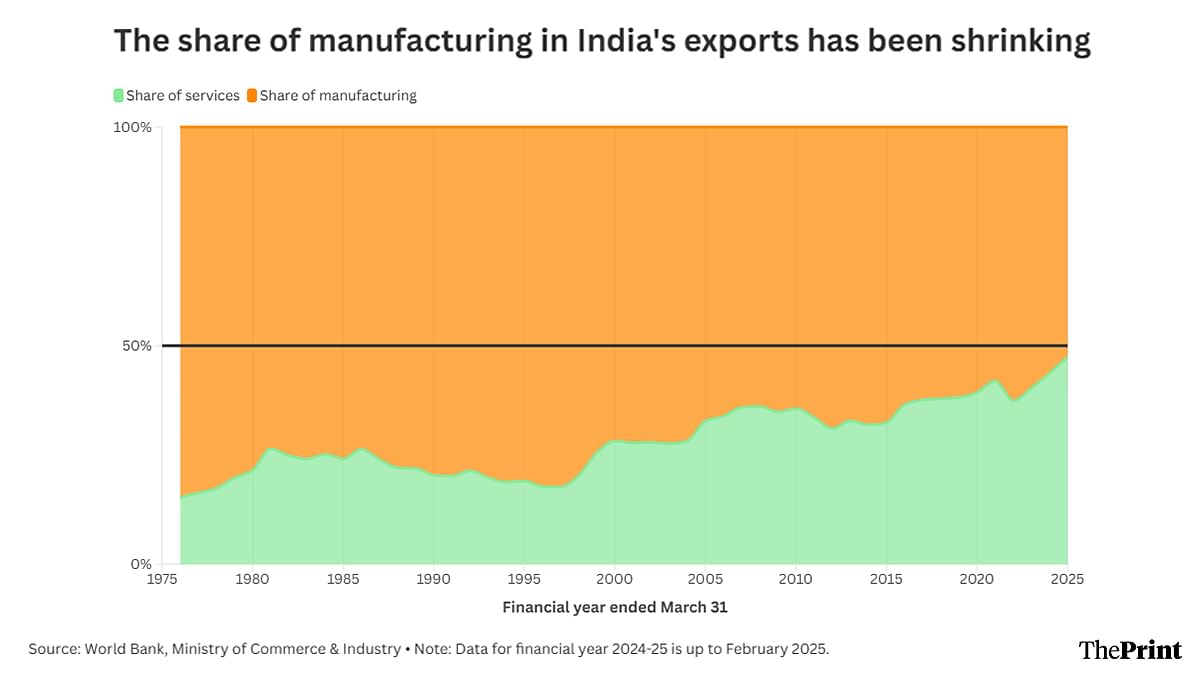
Merchandise made up about 85 percent of all of India’s exports in 1975, with services making up the balance 15 percent. By the turn of the century and millennium, services’ share had nearly doubled to 28 percent.
Taking the latest data for February 2025 into account, the share of services exports in India’s total exports has risen to 47.4 percent in 2024-25, with data for the last month of the financial year yet to be released.
In fact, during 2024-25, the share of services exports rose above 50 percent twice so far— in November 2024 and January 2025.
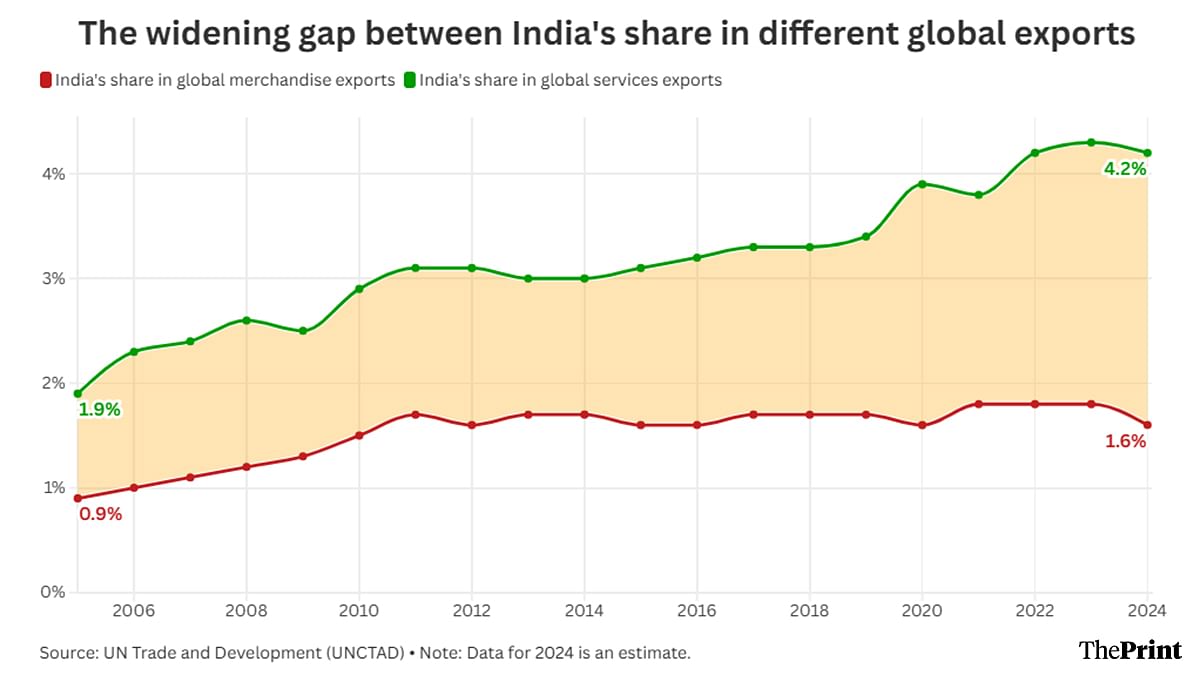
The rising significance of the services sector in India’s export basket has meant that the gap between India’s share in global merchandise and services exports has also been widening.
In 2005, India’s share in global services and merchandise exports stood at 1.9 percent and 0.9 percent, respectively—a gap of 1 percentage point. With the share of India’s services exports rising to 4.2 percent and merchandise exports increasing to only 1.6 percent, the gap between the two has widened to 2.6 percentage points.
(Edited by Sanya Mathur)
Also Read: How reciprocal Trump tariffs may impact Indian pharma, and become a bitter pill for the US


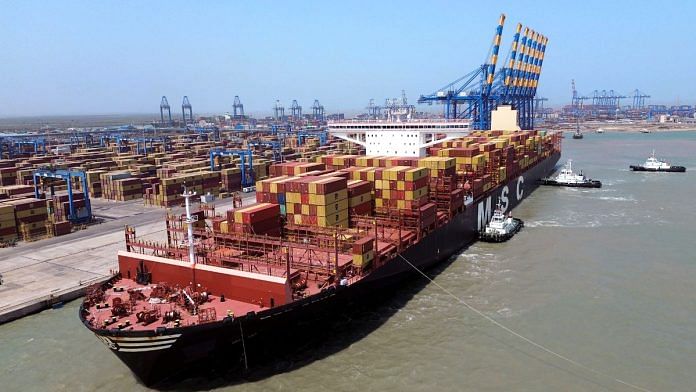


What an absolute pity. The heading itself dismays me so much, have no heart to read what is always a fine column. Houston, we are in trouble, with or without a side order of digging up Emperor Aurangzeb’s grave.